The WD Black2 Review: World's First 2.5" Dual-Drive
by Kristian Vättö on January 30, 2014 7:00 AM ESTRandom Read/Write Speed
The four corners of SSD performance are as follows: random read, random write, sequential read and sequential write speed. Random accesses are generally small in size, while sequential accesses tend to be larger and thus we have the four Iometer tests we use in all of our reviews.
Our first test writes 4KB in a completely random pattern over an 8GB space of the drive to simulate the sort of random access that you'd see on an OS drive (even this is more stressful than a normal desktop user would see). I perform three concurrent IOs and run the test for 3 minutes. The results reported are in average MB/s over the entire time. We use both standard pseudo randomly generated data for each write as well as fully random data to show you both the maximum and minimum performance offered by SandForce based drives in these tests. The average performance of SF drives will likely be somewhere in between the two values for each drive you see in the graphs. For an understanding of why this matters, read our original SandForce article.
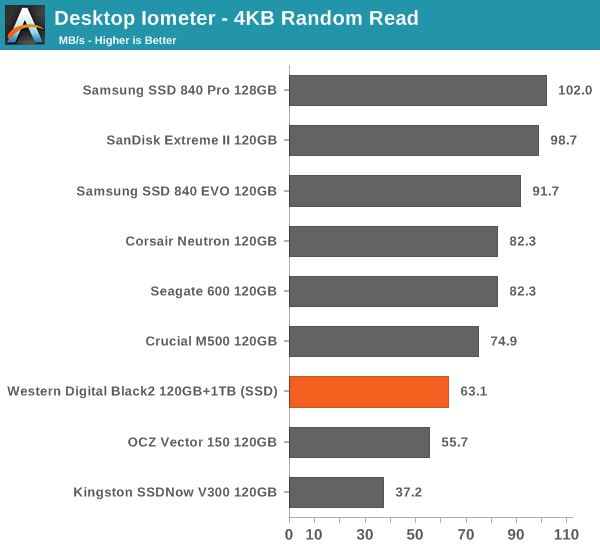

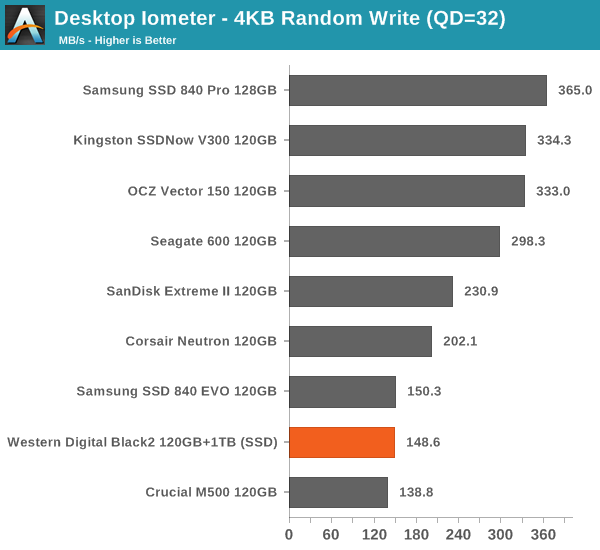
Random IO performance is relatively low per today's standards but not truly horrible. I was expecting something worse but the JMF667H turns out to be rather competitive with popular big brand drives like the Samsung 840 EVO and Crucial M500.
Sequential Read/Write Speed
To measure sequential performance I ran a 1 minute long 128KB sequential test over the entire span of the drive at a queue depth of 1. The results reported are in average MB/s over the entire test length.
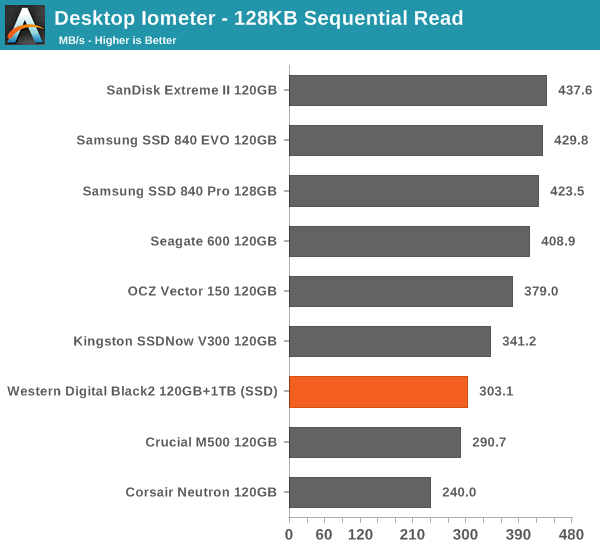
The same goes for sequential performance. It's not bad but there are far better options at 120/128GB.
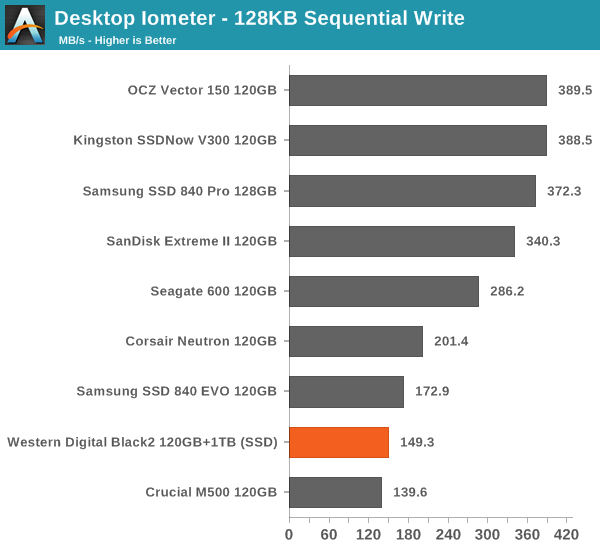
AS-SSD Incompressible Sequential Read/Write Performance
The AS-SSD sequential benchmark uses incompressible data for all of its transfers. The result is a pretty big reduction in sequential write speed on SandForce based controllers.
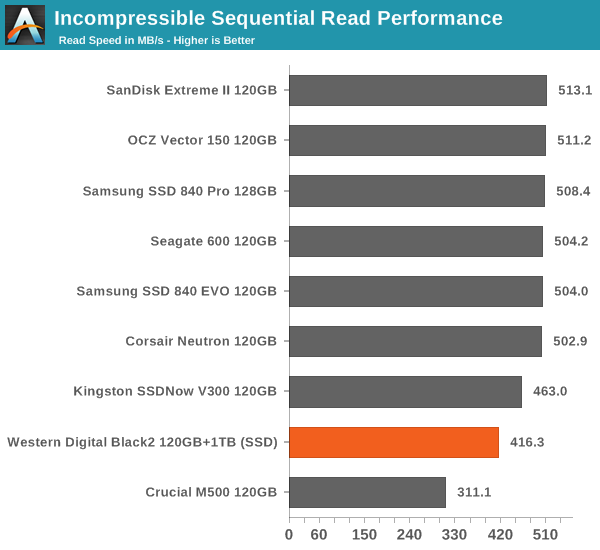











100 Comments
View All Comments
chizow - Friday, January 31, 2014 - link
Hmm yeah you're right, I didn't know this was priced so high at $290 and 1TB SSDs are in that $500-600 range now from what I've seen.This would probably need to drop down to ~$180 to be worthwhile, based on pricing of a 120SSD ($80ish) and 1TB 2.5" HDD ($80) with a small premium for combined slot.
Braumin - Thursday, January 30, 2014 - link
This is a bit silly. If they had gone to the trouble of merging the two into a single logical unit, it would make more sense.As you rightly pointed out - it makes little sense to anyone. If you need more space, you can do that in so many other ways...
This needed to be like the Fusion drive or it's DOA.
Mayuyu - Thursday, January 30, 2014 - link
Dead on Arrival. Device makers don't believe that consumers can handle a file manager. WD thinks people want to separate their files between a hard drive and a SSD?mikato - Friday, January 31, 2014 - link
I'm not giving it to my parents, that's for sure. They only get single drive systems. It may be an SSD if they keep dropping in price.speculatrix - Thursday, January 30, 2014 - link
Am I the only person who on seeing the picture of someone holding the nSATA card by its connector thinks "well, that's part ruined... likely to die early from ESD, or corrosion on the edge connector"?Gigaplex - Thursday, January 30, 2014 - link
The devices held like that for marketing purposes are often defective parts already.Gasaraki88 - Thursday, January 30, 2014 - link
I'm not seeing the point of this drive. Why don't I get a 128SSD and a 1TB drive separately?Gasaraki88 - Thursday, January 30, 2014 - link
They should have made this a hybrid drive. That would have been awesome, 128GB SSD cache with a 1TB spinning disk.kmmatney - Monday, February 3, 2014 - link
The Seagate Momentus XTs are already pretty nice with an 8 GB cache (I have 2 of the older models with 4GB cache, and even those are "pretty good"). So a hybrid with this much cache could be awesome. I don't think the hybrid drives cache writes, so that would limit performance. I'm on the fence with this - I think it needs to be priced around $200 to be more interesting.mr_tawan - Thursday, January 30, 2014 - link
Some people on a laptop does only have 1 bay for 2.5" drive available, with no mSATA socket whatsoever. Given that larger SSD is still quite expensive, you might have to choose between having a speedy system with no room for storage, and a plenty of space but slow as snail.These people might go with SSD and a USB3 HDD, of course, but carrying another external drive makes the system bit less mobile.
If the laptop has optical drive, then you might swap it with a 2.5" drive caddy. But it does not, well this might be a good option.
Too bad the drive does not really perform, and it's pretty pricey. I'd have gone with a drive caddy and a external bluray drive :-(.